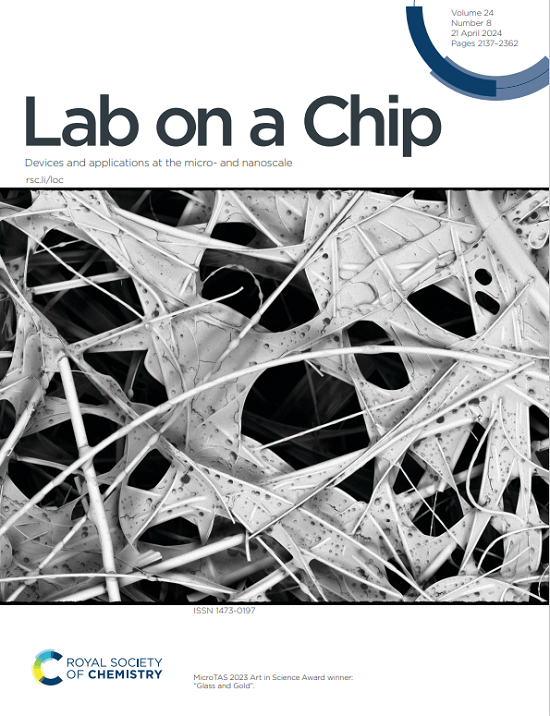High speed microturbine mixer for kinetically controlled synthesis
IF 5.4
2区 工程技术
Q1 BIOCHEMICAL RESEARCH METHODS
引用次数: 0
Abstract
The design, fabrication, simulation, and experimental characterization of a microfabricated, fluidically-driven microturbine mixer are presented. The mixer was engineered to achieve rapid mixing (<1 ms), enabling control over kinetically-limited chemical reactions. The microturbine is microfabricated in silicon using a sequence of photolithographic patterning and deep reactive ion etching (DRIE) steps. The device features two fluidic inlets, each supplying chemical reagents, that drive a microturbine through momentum transfer, generating shear forces within the reaction chamber to induce mixing. By systematically varying the flow rates of the reagents, the rotational velocities of the microturbine were experimentally and computationally determined. Mixing profiles were analyzed using fluorescence colocalization, an established biological imaging technique that was adopted for this application. Characterization results were leveraged to optimize the synthesis of ultra-small, monodisperse silver nanoparticles (AgNPs), i.e. particles of 1 nm to 3 nm in diameter. These nanoparticles have very large surface-to-volume ratios, making them ideal candidates for applications in catalysis, sensing, and antimicrobial agents. The microturbine mixer provides a scalable and reproducible method for the production of ultra-small AgNPs through precise control of mixing conditions, overcoming challenges associated with traditional synthesis routes that struggle to attain size control, size distribution and reproducibility.

用于动控合成的高速微涡轮混合器
介绍了一种微型流体驱动微型涡轮混合器的设计、制造、仿真和实验表征。该混合器经过设计,可实现快速混合(1毫秒),从而控制动力学受限的化学反应。该微型涡轮机采用一系列光刻图像化和深度反应离子蚀刻(DRIE)步骤在硅中进行微制造。该装置具有两个流体入口,每个入口提供化学试剂,通过动量传递驱动微型涡轮机,在反应室内产生剪切力以诱导混合。通过系统地改变试剂的流速,实验和计算确定了微涡轮的转速。混合剖面分析使用荧光共定位,一种已建立的生物成像技术,采用了这种应用。利用表征结果优化了超小单分散银纳米颗粒(AgNPs)的合成,即直径为1 nm至3 nm的颗粒。这些纳米颗粒具有非常大的表面体积比,使其成为催化、传感和抗菌剂应用的理想候选者。微型涡轮混合器通过精确控制混合条件,为生产超小型AgNPs提供了一种可扩展和可重复的方法,克服了传统合成路线难以实现尺寸控制、尺寸分布和可重复性的挑战。
本文章由计算机程序翻译,如有差异,请以英文原文为准。
求助全文
约1分钟内获得全文
求助全文
来源期刊

Lab on a Chip
工程技术-化学综合
CiteScore
11.10
自引率
8.20%
发文量
434
审稿时长
2.6 months
期刊介绍:
Lab on a Chip is the premiere journal that publishes cutting-edge research in the field of miniaturization. By their very nature, microfluidic/nanofluidic/miniaturized systems are at the intersection of disciplines, spanning fundamental research to high-end application, which is reflected by the broad readership of the journal. Lab on a Chip publishes two types of papers on original research: full-length research papers and communications. Papers should demonstrate innovations, which can come from technical advancements or applications addressing pressing needs in globally important areas. The journal also publishes Comments, Reviews, and Perspectives.
 求助内容:
求助内容: 应助结果提醒方式:
应助结果提醒方式:


